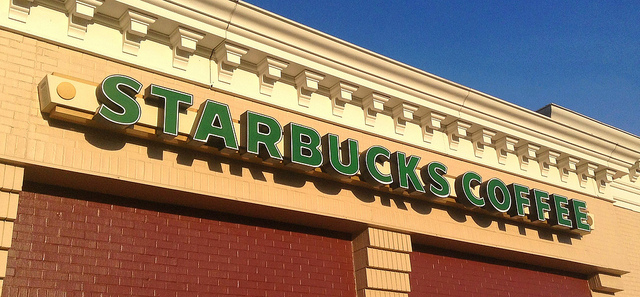12.7 Leadership Development: The Case of Starbucks
Starbucks Coffee (NASDAQ: SBUX) was born out of a desire for convenience and accessibility to great coffee. In 1971, three friends made that desire a reality and established the first Starbucks coffee house in historic Pike Place Market on Seattle’s waterfront. In 1990, Starbucks drafted its first mission statement, and the number one principle was to “provide a great work environment and treat each other with respect and dignity.” How has the company lived up to that declaration 20 years later?? Starbucks has consistently made Fortune magazine’s “100 Best Companies to Work For” list and in addition is included on a list of the best places to work for LGBT (lesbian, gay, bisexual, and transgender) equality. Working conditions in the service and retail industry are notoriously low paying with long hours, but Starbucks manages to offer benefits for part-time and full-time employees as well as higher-than-average salaries for store managers. Why, one might ask, does Starbucks try so hard to set itself apart?
Leadership development is a core element of the business process at Starbucks, which ensures that the organizational culture of the company is maintained with every CEO successor. Starbucks is forward looking in this respect and strives to attract future business leaders and managers. The idea of planning for one’s own succession can often make people uneasy, but this idea is openly embraced at Starbucks. The company plans far in advance to replace its top-level successors. The importance of leadership is not only ingrained in the upper management team, but Starbucks also ensures that this is an understood value throughout the organization. In 2004, the Coffee Master program was introduced to teach employees about regional coffee flavors. Graduates of the Coffee Master program earn a prestigious black apron and a special insignia on their business cards. In creating this ethos, Starbucks excels at its ability to attract an educated workforce with a high satisfaction level where individuals often move up to become effective leaders within the company.
With the recession of 2009, Starbucks has been forced to rethink its traditional strategy of accelerated growth by closing over 30,000 stores. CEO Howard Schultz has cut his salary to less than $10,000 a year, down from $1.2 million. Despite these slowdowns, Starbucks continues to call employees “partners” and offers a dynamic place to work. As a result, the company had more than 150,000 people apply for jobs last year, a sure indication that the company’s ability to cultivate talented leaders is as strong as ever.
Based on information from Helm, B. (2007, April 9). Saving Starbucks’ soul. BusinessWeek. pp. 56–61. Retrieved April 30, 2010, from http://www.businessweek.com/magazine/content/07_15/b4029070.htm; Cohn, J., Khurana, R., & Reeves, L. (2005). Growing talent as if your business depended on it. Harvard Business Review, 83(10), 62–70; Stanley, A. (2002). Starbucks Coffee Company. Tuck School of Business at Dartmouth (no. 1–0023). Retrieved April 23, 2010, from http://mba.tuck.dartmouth.edu/pdf/2002-1-0023.pdf; 100 best companies to work for. (2010, February 8). Fortune. Retrieved February 14, 2010, from http://money.cnn.com/magazines/fortune/bestcompanies/2010/snapshots/93.html; Miller, C. C. (2009, January 29). Starbucks to close 300 stores and open fewer new ones. New York Times. Retrieved February 15, 2010, from http://www.nytimes.com/2009/01/29/business/29sbux.html.
Discussion Questions
- Why does Starbucks Coffee consider internal leadership development such an important part of its core business process?
- What possible negative repercussions can the aggressive growth strategy that Starbucks exhibits have on its leadership agenda?
- With the slowdown of business, how can Starbucks ensure that the importance of leadership development does not get overlooked?
- How does your experience with leadership and management compare with the case of Starbucks?


